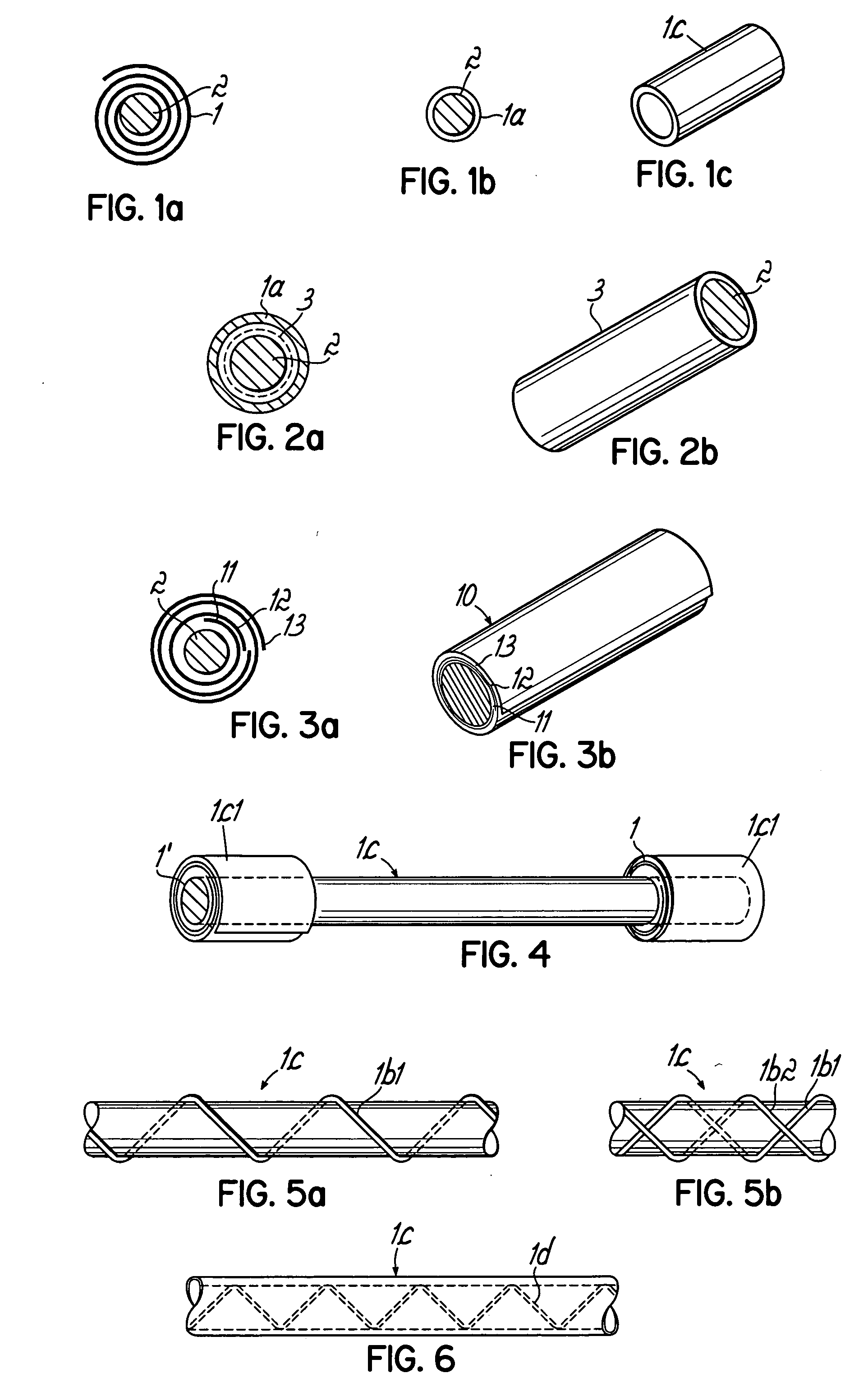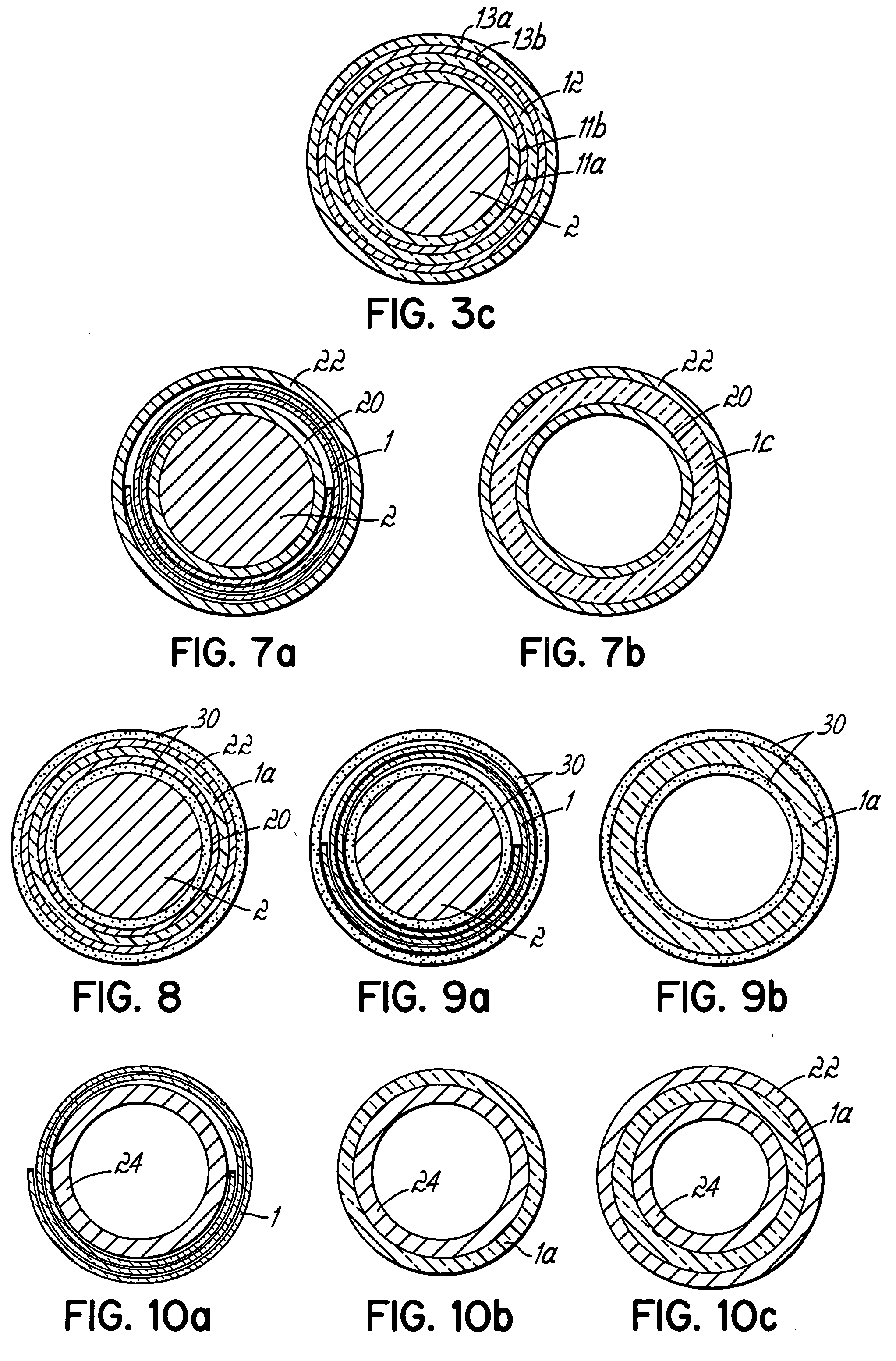Method of making laminate thin-wall ceramic tubes and said tubes with electrodes, particularly for solid oxide fuel cells
a technology of thin-walled ceramic tubes and electrodes, which is applied in the manufacture of tools, cell components, electrochemical generators, etc., can solve the problems of the production of thin walls themselves, the binders commonly used for extrusion do not maintain their strength, and the tubes can warp or twist during binder removal, so as to facilitate the separation of laminated wraps and add green thickness and strength.
- Summary
- Abstract
- Description
- Claims
- Application Information
AI Technical Summary
Benefits of technology
Problems solved by technology
Method used
Image
Examples
Embodiment Construction
[0026] The present invention contemplates a new process of fabricating thin walled ceramic tubes, particularly as are useful in Solid Oxide Fuel Cells (SOFCs). The thin-wall ceramic tubes are strong during binder removal, straight during and after firing, and of high quality without defects. Three of the laminated thin-walled ceramic tubes may be used in combination as a complete reaction chamber of a fuel cell.
[0027] The process of the present invention begins with very thin cast ceramic tape, such as from 10 μm to 50 μm, for example approximately 12 μm in thickness. The tape is wrapped around a mandrel, most commonly made of steel, with enough wraps to reach the desired thickness of a tube wall. To make a ceramic tube of approximate 100 μm wall thickness, approximately 10 layers of 12 μm tape are wrapped around the mandrel; the resulting 120 μm tube will shrink to about 100 μm wall thickness during sintering. To make this thin-walled ceramic tube approximately 15 cm in length, wh...
PUM
| Property | Measurement | Unit |
|---|---|---|
| Fraction | aaaaa | aaaaa |
| Thickness | aaaaa | aaaaa |
| Thickness | aaaaa | aaaaa |
Abstract
Description
Claims
Application Information
 Login to View More
Login to View More - R&D
- Intellectual Property
- Life Sciences
- Materials
- Tech Scout
- Unparalleled Data Quality
- Higher Quality Content
- 60% Fewer Hallucinations
Browse by: Latest US Patents, China's latest patents, Technical Efficacy Thesaurus, Application Domain, Technology Topic, Popular Technical Reports.
© 2025 PatSnap. All rights reserved.Legal|Privacy policy|Modern Slavery Act Transparency Statement|Sitemap|About US| Contact US: help@patsnap.com



